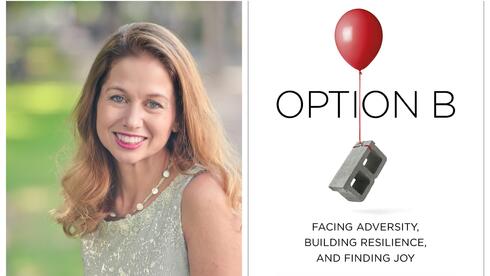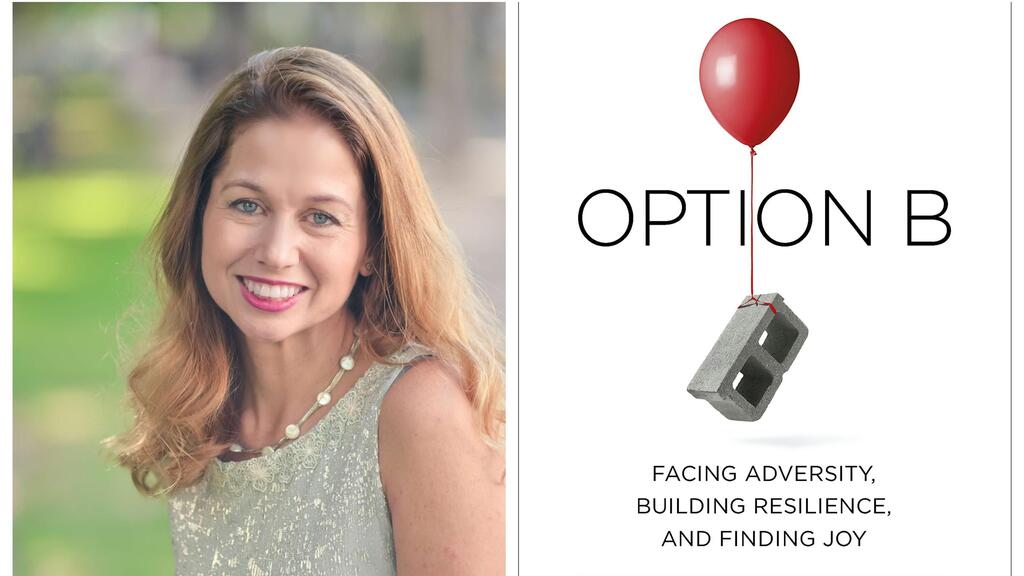
BiblioTech
CTech's Book Review: Understanding the “three Ps” when dealing with grief
Pamela Becker, CMO at WhizzCO and Co-founder and Chair at Jeremy's Circle, shares insights after reading “Option B: Facing Adversity, Building Resilience, and Finding Joy” by Sheryl Sandberg and Adam Grant.
Pamela Becker is the CMO at WhizzCO and Co-founder and Chair at Jeremy's Circle, an Israeli-registered charity that offers a supportive community for children and early teens growing up with cancer in their families. She has joined CTech to share a review of “Option B: Facing Adversity, Building Resilience, and Finding Joy” by Sheryl Sandberg and Adam Grant.
Title: “Option B: Facing Adversity, Building Resilience, and Finding Joy”
Author: Sheryl Sandberg and Adam Grant
Format: Audiobook
Where: Home
1 View gallery


Pamela Becker, CMO at WhizzCO and Co-founder and Chair at Jeremy's Circle
(Photo: Yossi Masa/Amazon)
Summary:
How did one of the most competent women in the world cope when the worst happened?
The COO of Meta (then Facebook) was the mother of two small children when her beloved husband died suddenly. Two years later, together with Organizational Psychologist Adam Grant, Sandberg published this book on resilience and coping with personal crises.
They acknowledge that as an educated, well-connected, wealthy white woman in America she had it easier than most. They focus on the more universal concepts that helped her and can help others when life does not go as we so carefully plan, and we have to make the best of life’s Option B.
Important Themes:
The writers discuss the “three Ps” when coping with a major crisis: Personalization, Pervasiveness, and Permanence.
That is, what happened is not personal. It is not some cosmic punishment for some crime you might have done that took your loved one away. It will not ruin every aspect of your life. And it will not hurt so badly forever. This message sounds simple and logical. I summarized it in four short sentences. But our thinking, when we are in pain, is not always logical. The internalization of these concepts could bring tremendous relief to many in crisis.
The book also reinforced two key learnings from my own experience years ago as a young widow with small children.
We need our pain acknowledged, even when it's not understood. We certainly do not want others to intentionally avoid us. Sandberg describes the difference between casually asking someone in crisis the sometimes flippant-sounding “How are you?” to asking “How are you today?”. Of course, someone in crisis is not peachy-keen. But this breaks down the question into something much easier to both ask and answer.
We want to connect with people who get it without having to explain. Sandberg describes interactions with her connections who had also experienced tremendous grief. There is a shorthand. And meeting others who know that shorthand brings comfort and encouragement because, among other reasons, it shows that surviving (and the thriving of our children) is attainable.
What I’ve Learned:
Like in the book, I see my life as before my husband Jeremy died and after. Before, we were both executives at the same advertising technology startup, sharing kids, a home, and even an office. Suffering from discomfort when swallowing, he was diagnosed with stage four stomach cancer and fourteen months later he died.
Today, everything is different. As Sandberg writes, even music feels different. The song from the first dance at our wedding - Lou Reed’s It’s A Perfect Day - has totally new meaning to me now.
I am no longer fresh in my grief. My husband died 14 years ago when my children - now in high school and in the Israeli army - were very small. It’s only now, as I see that my kids are not just okay, but are actually quite fabulous despite the loss, that I can identify more clearly what helped us cope.
It comes down to this: Connections. With each other and with the circles of family, friends, and co-workers. And with the people - that we know well or not - that understand us without us having to explain because they have been there too. This is why Jeremy’s Circle, the supportive community we established for children coping with cancer or cancer loss in their families to meet and play with each other, is so important.
Critiques:
The book describes the painful impact of poverty, sexism, and abuse on already painful circumstances and offers ample statistics on the unfairness of it all.
In parallel, Sandberg writes about how it helped lift her mourning children’s spirits when her friend Elon Musk invited them to check out a space project. My mourning children would have loved that too…but the anecdote and choice to include it make me question if she is really the right person to educate us about how much more challenging grief can be without resources.
Who Should Read This Book:
I recommend this book to anyone who is working their way through a crisis, as well as those who support them. There are smart, sensible lessons here on how we can help ourselves and each other in hours of need.
Unfortunately, terrible things happen to all of us eventually. Education, success, and wealth do not protect us, although fairly or not, they afford us tools that can help us and our children. There are steps we can take to make these tools more widely available, and are referred to in the book.














